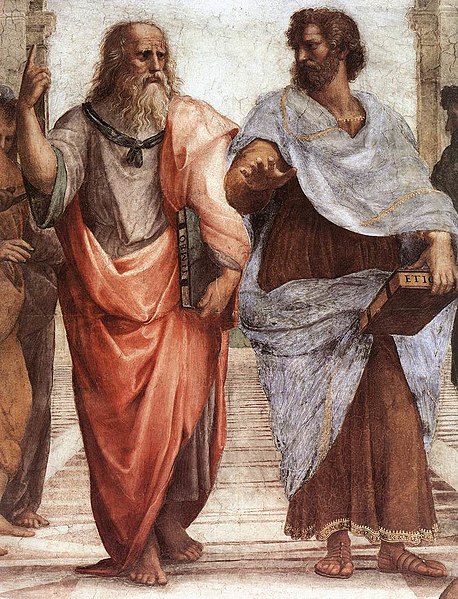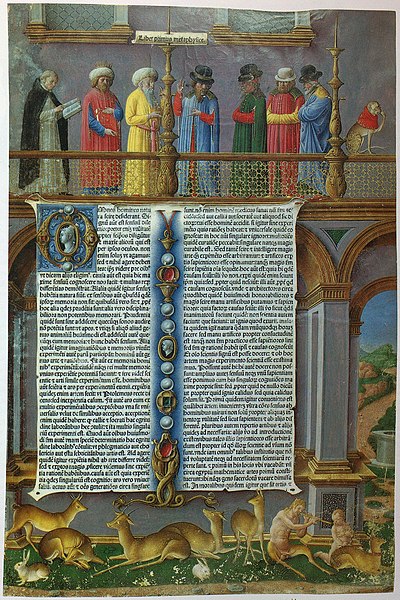In philosophy and specifically metaphysics, the theory of Forms, theory of Ideas, Platonic idealism, or Platonic realism is a theory widely credited to the Classical Greek philosopher Plato. The theory suggests that the physical world is not as real or true as "Forms". According to this theory, Forms—conventionally capitalized and also commonly translated as "Ideas"—are the non-physical, timeless, absolute, and unchangeable essences of all things, of which objects and matter in the physical world are merely imitations. Plato speaks of these entities only through the characters in his dialogues who sometimes suggest that these Forms are the only objects of study that can provide knowledge.

The central image from Raphael's The School of Athens (1509–1511), depicting Plato (left) and Aristotle (right). Plato is depicted pointing upwards, in reference to his belief in the higher Forms, while Aristotle disagrees and gestures downwards to the here-and-now, in reference to his belief in empiricism.
Metaphysics is the branch of philosophy that examines the basic structure of reality. It is often characterized as first philosophy, implying that it is more fundamental than other forms of philosophical inquiry. Metaphysics is traditionally seen as the study of mind-independent features of the world, but some modern theorists understand it as an inquiry into the conceptual schemes that underlie human thought and experience.
The beginning of Aristotle's Metaphysics, one of the foundational texts of the discipline
Immanuel Kant conceived critical metaphysics as the study of the principles underlying all human thought and experience.
David Hume criticized metaphysicians for trying to arrive at knowledge outside the field of sensory experience.
Boethius's theory of universals influenced many subsequent metaphysicians.





